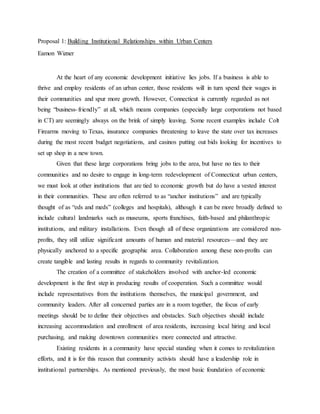This proposal discusses building relationships between anchor institutions like colleges, hospitals, and cultural organizations and urban communities to promote economic development. It suggests forming a committee of stakeholders to define objectives like hiring local residents and purchasing locally. The proposal argues that anchor institutions have a vested interest in the economic health of their surrounding neighborhoods and that collaborating can help revitalize areas through job creation, local business support, and improving living conditions while avoiding displacement of existing residents. By increasing coordination between anchors, government and community leaders, incentives and programs can be established to stimulate urban renewal in a fiscally responsible way.

